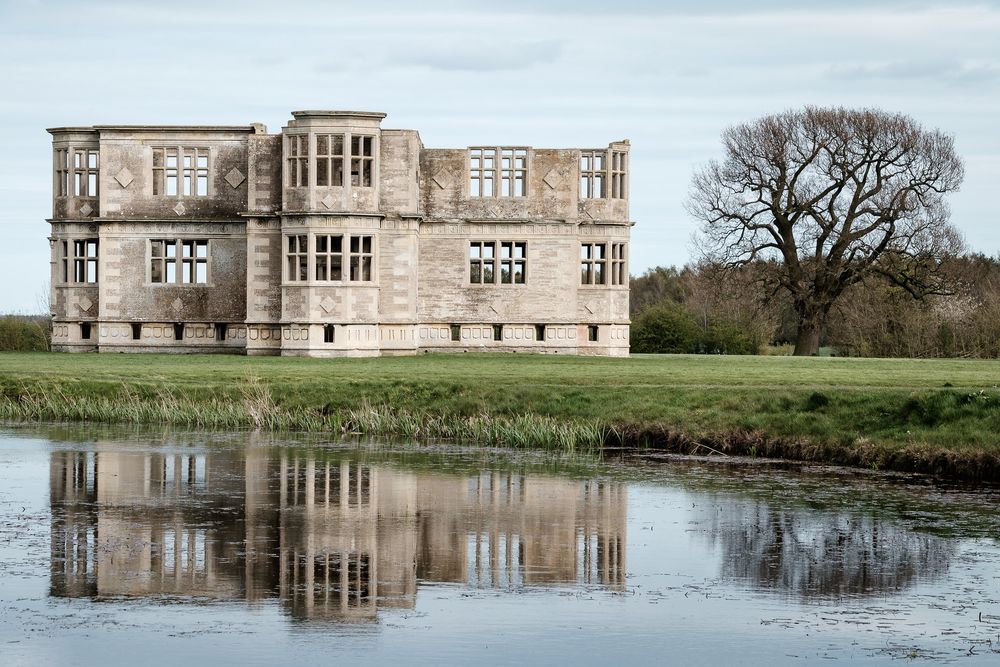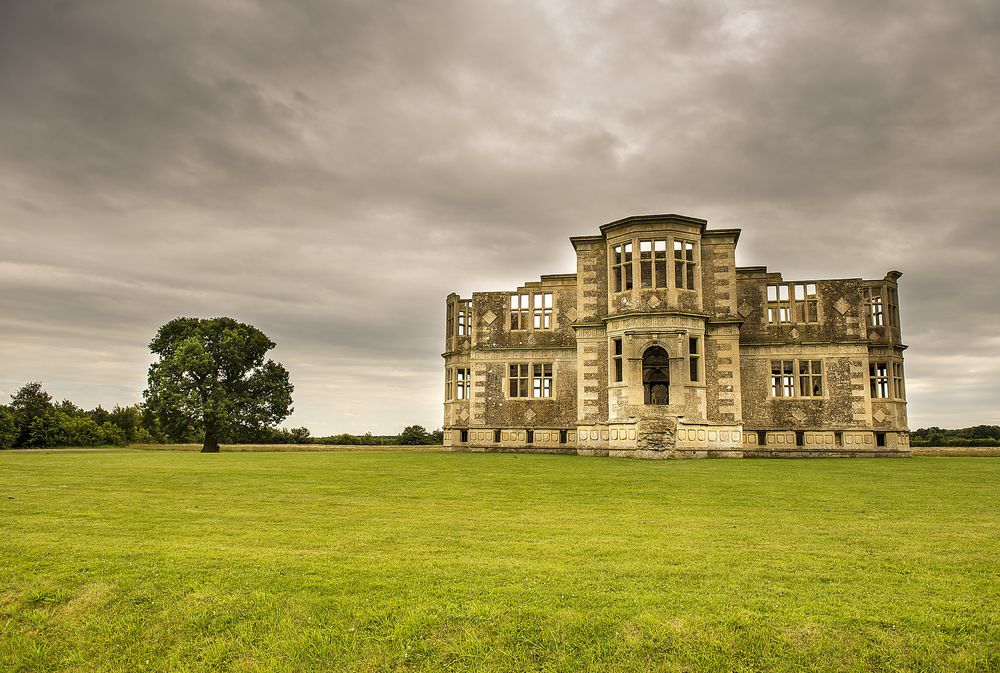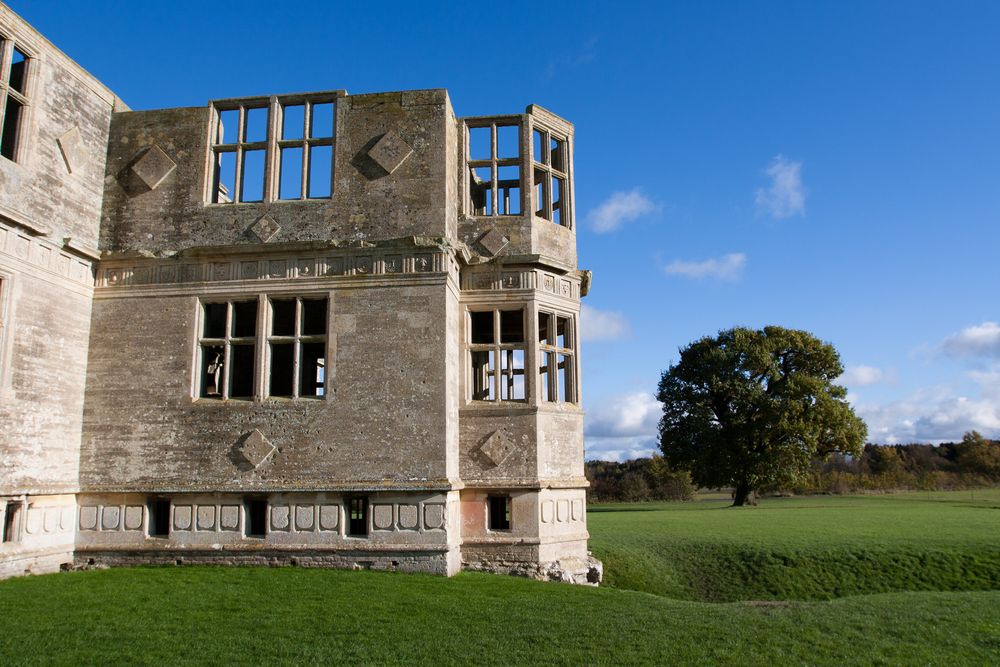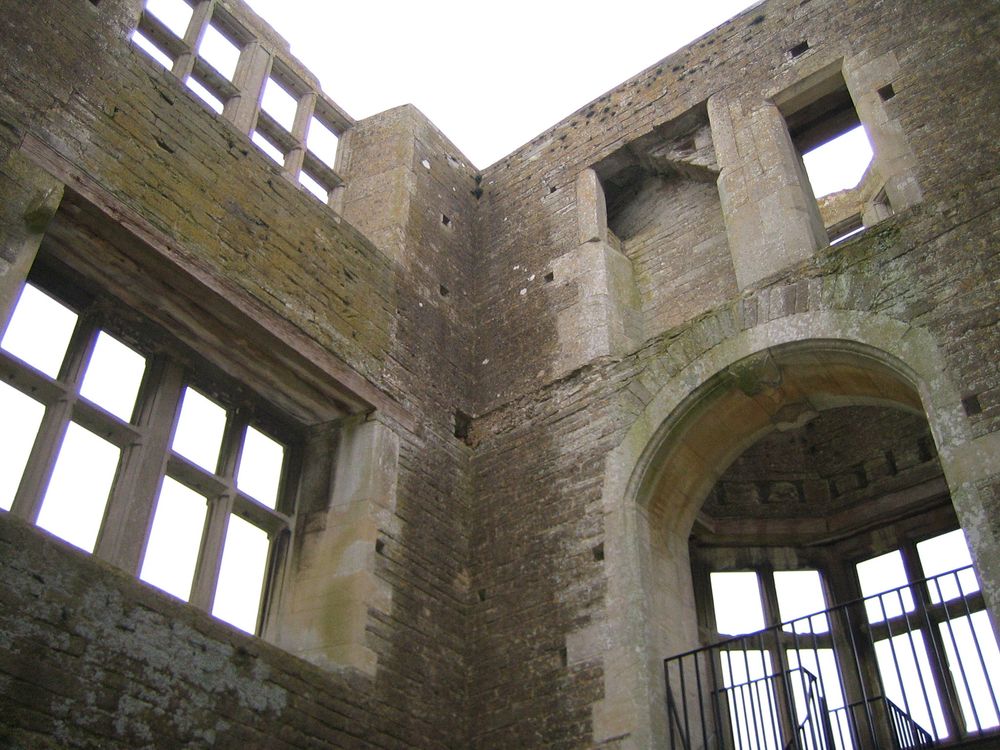Lyveden New Bield is an unfinished Elizabethan summer house located in the parish of Aldwincle in North Northamptonshire, England. The National Trust, which currently owns the building, calls it a 'building of exceptional interest’ because of the religious symbolism in its architecture.
Lyveden New Bield was constructed by Sir Thomas Tresham, who was a devout Catholic, which made him a threat to Queen Elizabeth I’s Protestant belief. Tresham was frequently imprisoned for his beliefs and made to pay massive fines, which the grand prior willing paid in order to maintain his Catholic beliefs and practices. Tresham celebrated his beliefs architecturally. His most famous folly is the Triangular Lodge near Rushton which is loaded with religious symbolism. His second is the unfinished Lyveden New Bield, on the estate of Tresham's second home, Lyveden Manor House, also known as Lyveden Old Bield.

Photo: KingPhoto/Wikimedia
Just as at Tresham's Rushton Triangular Lodge, the New Bield has a religious design full of symbolism. Designed on a plan reminiscent of a Greek cross, the facades have a strict symmetry. The building has two floors above a raised basement, with mullioned and transomed windows. Each floor has three rooms with a staircase in the south projection of the cross. The bay windows has five sides each, the number five being a common symbol for Jesus and Mary. The exterior of the building is decorated by friezes of a religious nature.
The New Bield was never intended to be Tresham's main house, but an escape, where Tresham could retreat with a few servants while his main house was being cleaned. It has a great hall and parlour on the first floor, kitchen and buttery in the basement, and a bedroom on the upper floor.
Lyveden New Bield was never completed. Sir Thomas Tresham died in 1605 following decades of religious persecution, which severely depleted his wealth. His son Francis Tresham inherited the estate, but within the same year, along with his cousins Catesby and Wintour, he became involved in the Gunpowder Plot. Francis’s mother managed the estate until her death in 1615. After this, Francis's son Lewis Tresham, squandered the remaining family wealth. The estate was eventually sold following the death of his son in 1643.

Photo: Andrew Stawarz/Flickr

Photo: Lee Morley/Flickr

Photo: Tusela/Flickr

Photo: Ade46/Flickr












Comments
Post a Comment